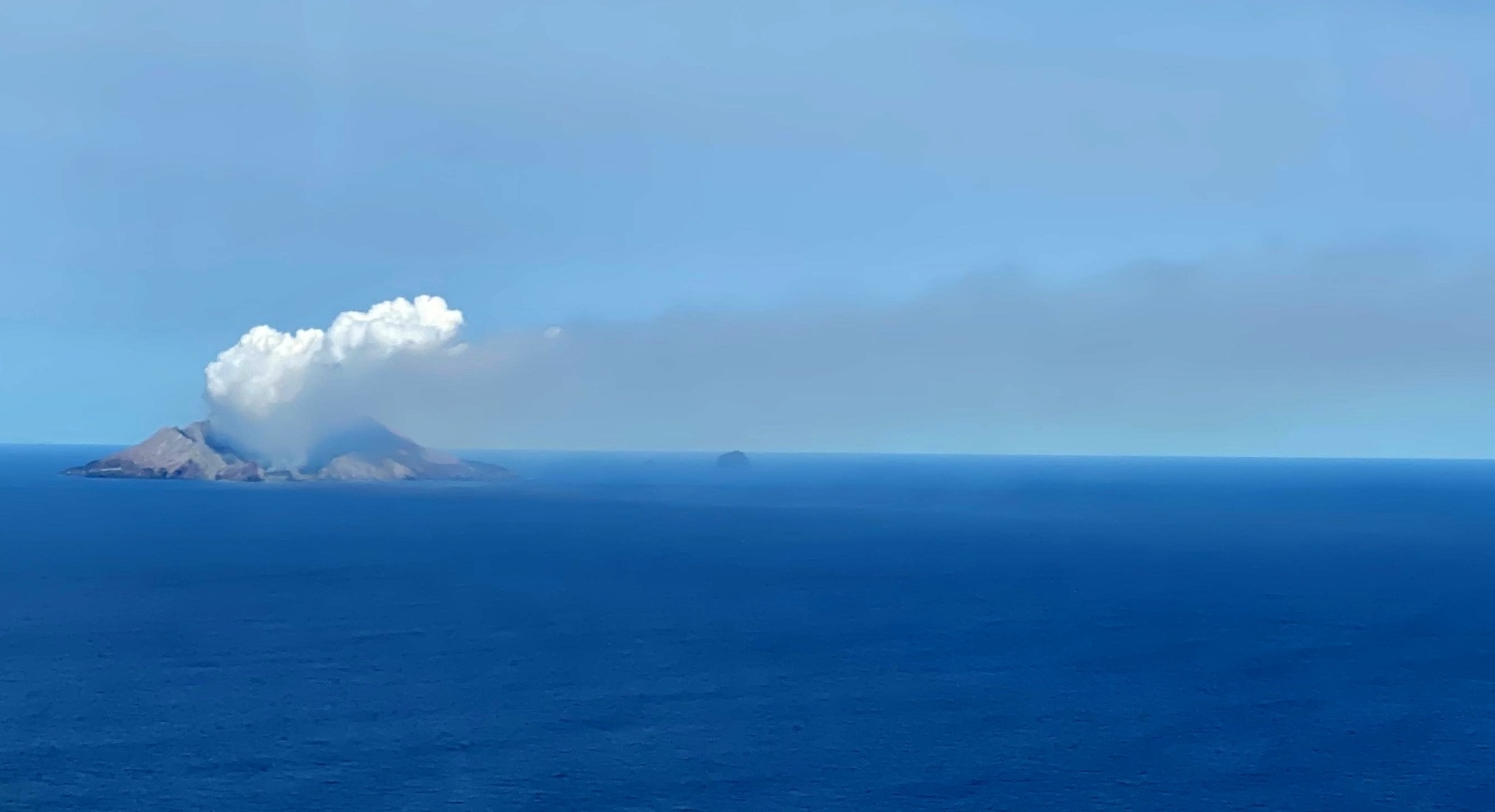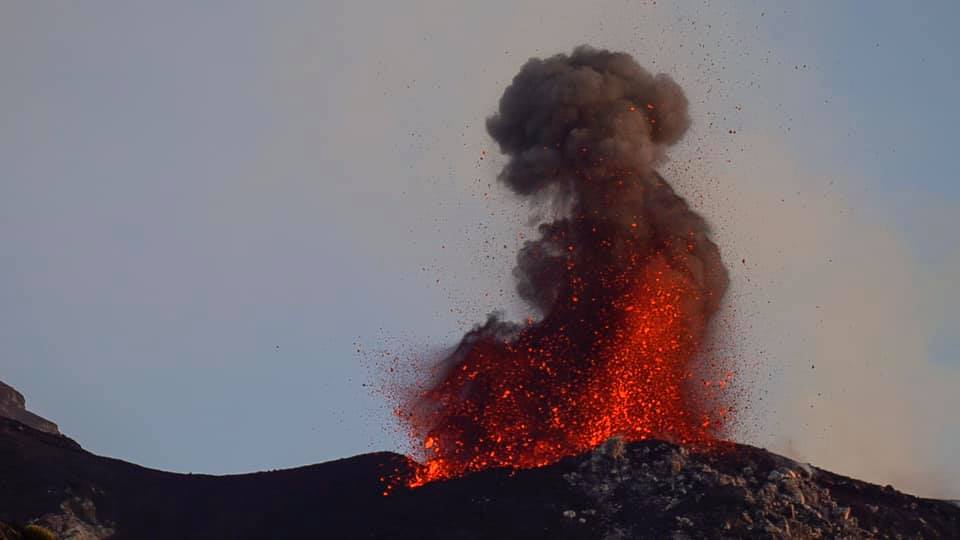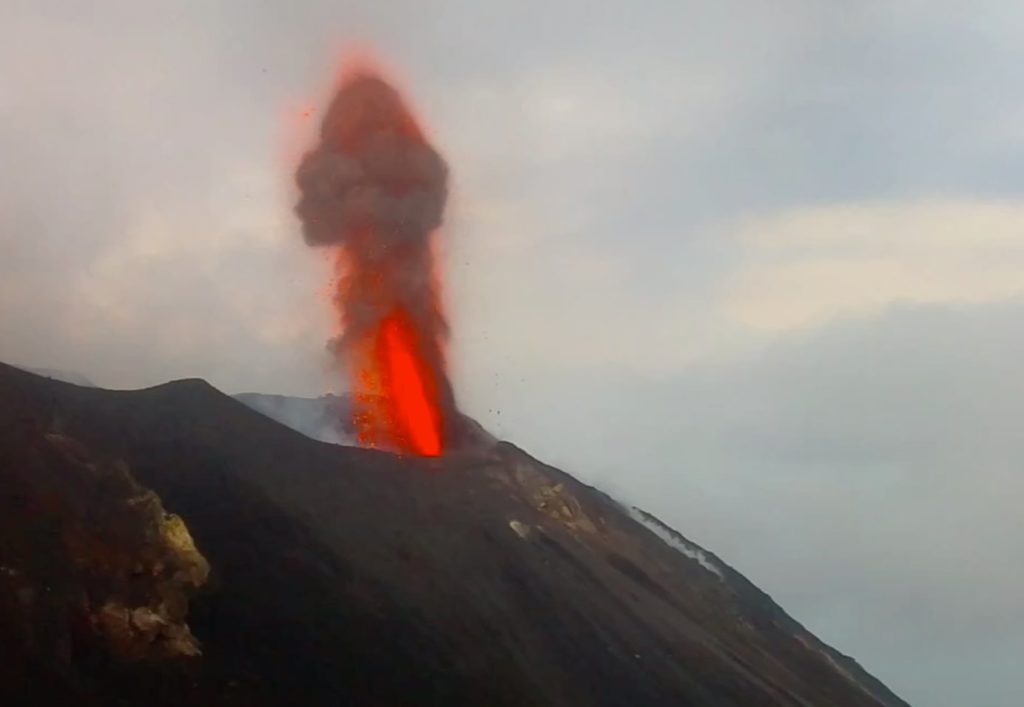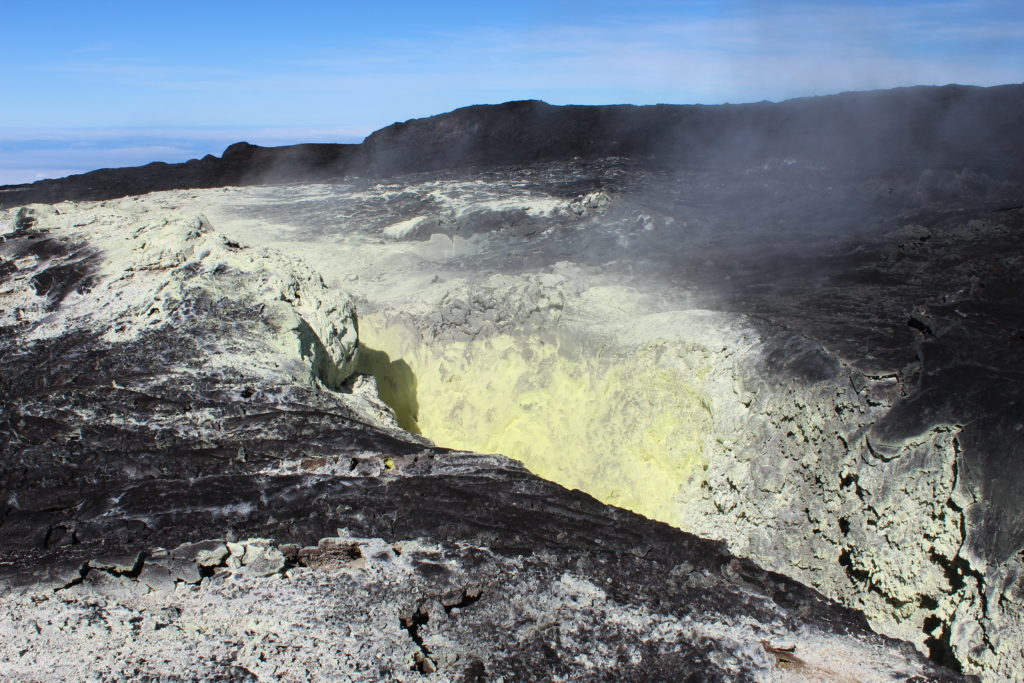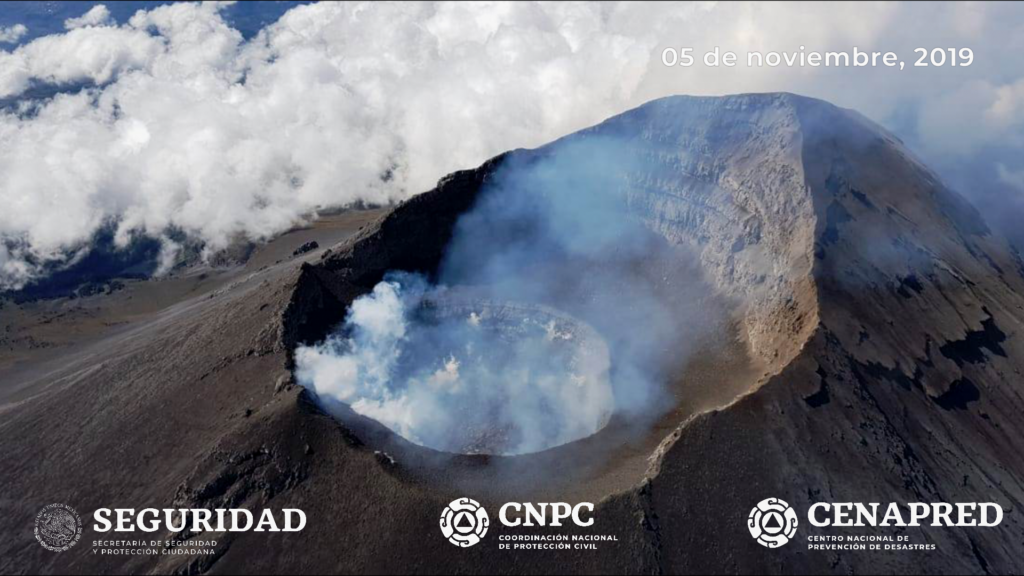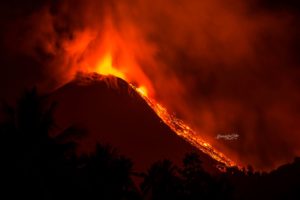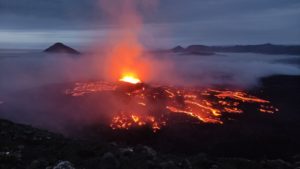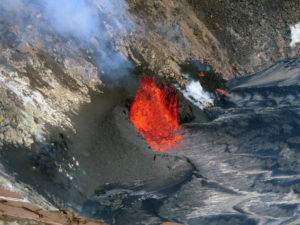December 20 , 2019.
New Zealand , White Island :
Volcanic Alert BulletinWI – 2019/28 . Fri Dec 20 2019 2:00 PM; White Island Volcano
Volcanic Alert Level remains at 2
Aviation Colour Code remains at Orange
We have confirmed that very hot gas and steam are being discharged from active vents at the back of the crater basin. Volcanic tremor continues at a low level. Further eruptions are unlikely in the next few days. The Volcanic Alert Level remains at Level 2.
Since the eruption on Monday December 9th, no further eruptive activity has occurred. The level of volcanic tremor remains low and new data and observations show strong flows of steam and gases continuing from the new vent area.
An observation flight yesterday afternoon (Thursday 19th), confirmed open steam and gas vents, one of which is discharging at more than 650 °C. This data confirms our previous interpretations that shallow magma is below the vent area. No magma or lava was seen.
Data processed from yesterday’s gas-measuring flight confirm that high levels (~15 kg/s) of sulphur dioxide continue to be discharged. The values are slightly lower than those (~20 kg/s) measured on December 12th.
Aerial observations yesterday clearly showed that a moderately small part of the southwestern slope of the 1914 landslide (inside the crater rim and opposite the former viewing area) has collapsed into the crater lake area including the area of the active vents, leaving a 12-metre-high scarp. This collapse occurred during or immediately following the eruption, but the area is known as a previously unstable area and will continue to be monitored.
The expert judgement made this morning calculated the likelihood of another eruption occurring between now and midday Monday 23rd. This judgement translates to another eruption being unlikely (10 – 20 %) within any 24-hour period through to Monday midday.
Consequently, the distances for GNS Science staff-access zones have been reduced. This will be reviewed again on Monday December 23rd, or sooner if required.
An explosive eruption from the main vent area remains possible and could still occur with no precursory activity, especially if there is a collapse of unstable material around one of the vents, or if the gas emission decreases markedly, allowing water to enter the vent. Sudden steam/gas eruptions from other active vents are also possible.
Should any explosive activity produce an ash cloud there remains an extremely low likelihood of ash affecting the mainland in the next 24 hours.
GNS Science and our National Geohazards Monitoring Centre continue to closely monitor Whakaari/White Island for further signs of activity.
Source : Geonet / Michael Rosenberg / Duty Volcanologist .
Photos : D.Rouwet, 25 mars 2019 , Geonet.
Italy , Stromboli :
Weekly bulletin from December 09, 2019 to December 15, 2019 (issue date December 17, 2019)
SUMMARY OF THE ACTIVITY.
In light of the monitoring data, we highlight:
1) VOLCANOLOGICAL OBSERVATIONS: During this period, a normal Strombolian type explosive activity was observed accompanied by degassing and splashing activities. The hourly frequency of explosions fluctuated between 14 and 23 events / h per day, with an intensity of explosions generally medium-low in the zone of the North crater and medium in the zone of the Center-South crater.
2) SEISMOLOGY: The seismological parameters do not show significant changes.
4) DEFORMATIONS: There is no significant change concerning the GPS networks and permanent tiltmeters.
5) GEOCHEMISTRY: the flow of SO2 is at a medium-high level. The isotopic ratios of helium dissolved in the thermal stratum remain unchanged on the medium-low values (analysis of 11/18/2019).
VOLCANOLOGICAL OBSERVATIONS
The analysis of the images recorded by the cameras placed at 400 meters, at 190 meters and at Punta dei Corvi allowed us to characterize the eruptive activity of Stromboli. During the period under review, the explosive activity was produced, mainly, by at least 3 (three) eruptive vents located in the area of the North crater and by at least 3 (three) eruptive vents located in the area of the Center crater -South. All the mouths are placed inside the depression which occupies the terrace of the crater. The video signal was interrupted between 9:16 p.m. UTC on December 12 and 10:34 UTC on December 14.
In the northern zone, the explosions were mostly of low intensity (less than 80 m high) and sometimes medium (less than 150 m high) emitting coarse materials (lapilli and bombs). In many explosions, the products of the relapse covered the outer slopes of the area facing the Sciara del Fuoco and some blocks rolled a few hundred meters before the mesa in place along the Sciara. From the vents located in the southern part of the northern zone, splash activity was observed which was sometimes intense (December 11). The average frequency of explosions varied between 6 and 12 events / h. The explosive activity in the Center-South zone produced explosions emitting coarse materials, sometimes mixed, at medium intensity (less than 150 m in height). In some explosions, the products fell into the upper part of the Sciara. The frequency of explosions in the Center-South zone varied between 7 and 12 events / h.
Source : INGV.
Read the whole article: file:///C:/Users/Utilisateur/AppData/Local/Packages/Microsoft.MicrosoftEdge_8wekyb3d8bbwe/TempState/Downloads/BollettinoStromboli20191217%20(1).pdf
Photos : Auteur inconnu , Web cam.
Hawaii , Mauna Loa :
19°28’30 » N 155°36’29 » W,
Summit Elevation 13681 ft (4170 m)
Current Volcano Alert Level: ADVISORY
Current Aviation Color Code: YELLOW
Activity Summary:
Mauna Loa Volcano is not erupting. Rates of deformation and seismicity have not changed significantly over the past week and remain above long-term background levels.
Observations:
During the past week, approximately 53 small-magnitude earthquakes (nearly all smaller than M2.0) were detected beneath the upper elevations of Mauna Loa. Most of the earthquakes occurred at shallow depths of less than 6 km (~4 miles) below sea level.
Native sulfur crystals often form through the reaction of sulfur dioxide and hydrogen sulfide gases, both of which are degassing from this old fissure on Mauna Loa, making it an ideal site for volcanic gas monitoring. As a result of the degassing, the fissure is lined with yellow sulfur crystals. USGS photo by P. Nadeau, 09-17-2019.
Global Positioning System (GPS) and Interferometric Synthetic Aperture Radar (InSAR) measurements show continued summit inflation, consistent with magma supply to the volcano’s shallow storage system.
Gas concentrations at the Sulphur Cone monitoring site on the Southwest Rift Zone remain stable. Fumarole temperatures as measured at both Sulphur Cone and the summit have not changed.
Source : HVO .
Mexico , Popocatepetl :
December 19, 11:00 a.m. (December 19, 5:00 p.m. GMT).
According to the monitoring systems of the Popocatepetl volcano, 146 exhalations have been identified accompanied by water vapor, volcanic gases and a low ash content. In addition, 19 minutes of low amplitude tremors and a volcano-tectonic earthquake were recorded today at 08:25, with a magnitude of 1.8.
From the early hours of the morning, a constant and slight emission of volcanic gases and sometimes slight amounts of ash were observed, which are preferentially dispersed towards the Northeast.
CENAPRED urges NOT to approach the volcano and especially the crater, because of the danger of falling ballistic fragments, and in case of heavy rain stay away from the bottom of the ravines because of the danger of mudslides and debris.
The Popocatépetl volcanic signaling light is in YELLOW PHASE 2.
Source : Cenapred .

